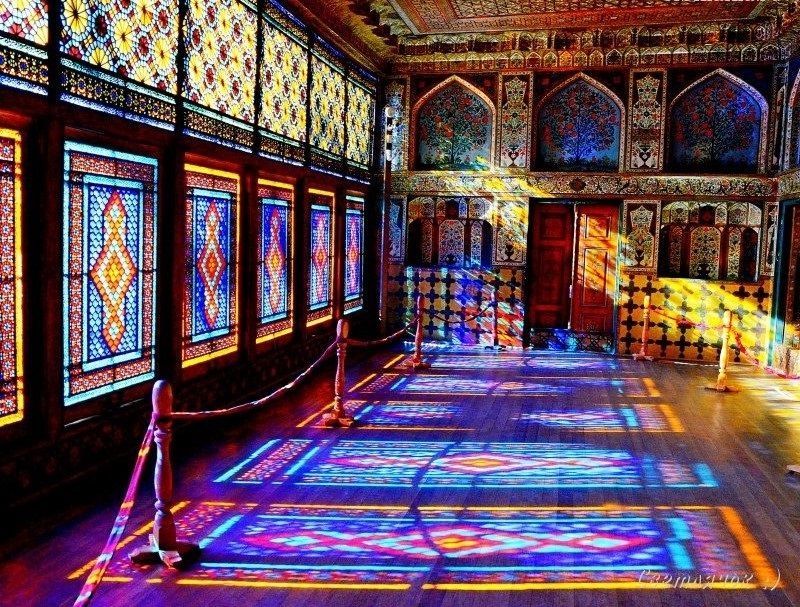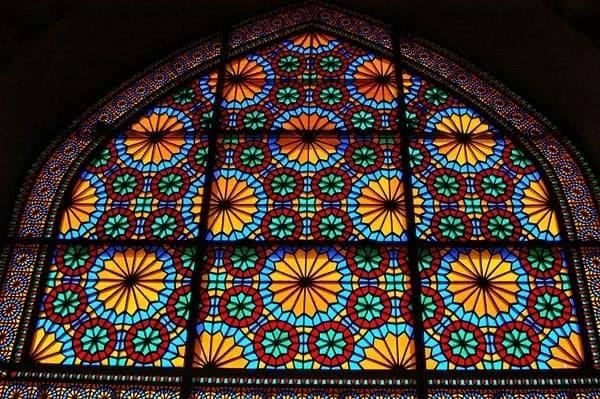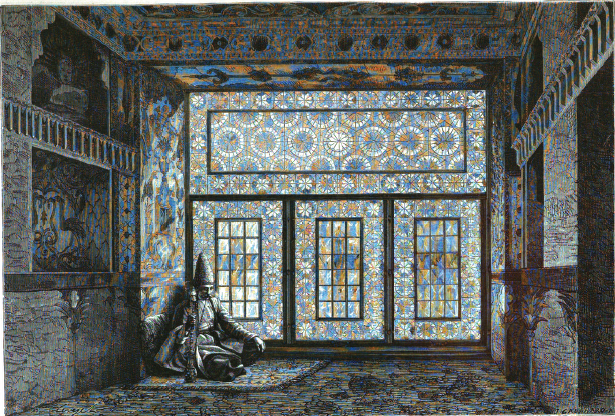|
|
TODAY.AZ / Arts & Entertainment
Explore rich legacy of shabaka art in Shaki and Shusha
22 January 2024 [17:57] - TODAY.AZ
 Laman Ismayilova
Laman Ismayilova
Azerbaijani decorative and applied art has a thousand-year history and rich artistic traditions.
Shabaka, also known as stained-glass windows, take a special place in Azerbaijani art and history, Azernews reports.
Stained glass work known as shabaka are windows filled with colored glass, created by national Azerbaijani masters from small wooden parts without glue and nails.
This intangible cultural heritage has been used in the architecture of Azerbaijan since the 11th and 12th centuries.
The unique art form was widespread on the territory of Azerbaijan, especially in Shaki, Shusha, Ordubad, Baku, Ganja, Lankaran, and Nakhchivan.
Shaki Khans' Palace
Shaki Khans' Palace is a remarkable example of shabaka art. In 2019, the Historic Centre of Shaki with the Khans' Palace was inscribed as a UNESCO World Heritage Site.

This majestic royal palace was built in the 18th century without a single nail, with luxurious wall paintings and openwork windows.
Stained-glass windows in the central halls and side rooms open on the facade. These stained-glass windows are a special feature of the palace's architecture.
The summer residence is renowned for its majestic interior. Large portions of the facade of the residence, including the entire southern elevations of the central halls on both floors, are covered by a mosaic of colored glass set in a wooden latticework (shabaka).
The interior walls of the residence are covered entirely with frescoes painted at different times during the eighteenth century.
Shabaka art in Shusha
There were numerous residential stone houses of the 18th and 19th centuries, decorated with shabaka, in the city of Shusha.
In the second half of the 19th century, Shusha turned into a cultural centre not only for Azerbaijan but also for the entire Caucasus and was distinguished by its architectural beauty.

Every Azerbaijani house has always had relatively large guest rooms, the design of which was given special attention.
In the 19th century, the guest rooms' design in Shusha included shabaka windows.
The windows in these houses, made in the shabaka style with multi-colored glass, were a source of special pride for the people of Shusha.
The notes of travellers repeatedly indicated that the large houses in Shusha differed from the houses of other Caucasian cities in their landscaping and design.

An excellent confirmation of this are the sketches of the Russian artist Vasily Vereshchagin, who visited Shusha in 1865.
Famous folk craftsmen like Mehdi Mehdiyev (19th century), Shahbuzla Abuzer Badalov (18th-19th centuries), and Abbasgulu Sheki (19th century) significantly contributed to the preservation of Azerbaijan's traditional stained-glass art
The revival of this art in the 20th century was facilitated by Abdulhuseyn Babayev (1877–1961) and Ashraf Rasulov (1928-1997).
Today, shabaka art continues to live thanks to talented craftsmen who astonish art aesthetes with incredibly beautiful stained-glass windows.
URL: http://www.today.az/news/entertainment/243889.html
 Print version
Print version
Connect with us. Get latest news and updates.
See Also
- 26 April 2024 [20:43]
Ganja arranges concert in honor of well-known tar player - 26 April 2024 [20:00]
Heydar Aliyev Foundation signs MoU with Turkiye's Zero Waste Foundation - 26 April 2024 [19:20]
Russian House in Baku celebrates jubilee of well-known musician - 26 April 2024 [17:58]
Eurovision 2024: Take look at cutting-edge stage design - 26 April 2024 [13:44]
Georges Bizet's opera to be premiered at Fidan Hajiyev Int'l Opera Festival - 26 April 2024 [12:44]
Baku to host Milena Nabieva's personal exhibition - 25 April 2024 [18:15]
Russian Cinema Days spark excitement in Baku - 25 April 2024 [17:15]
Heydar Aliyev Center opens exhibition within Days of Kyrgyz Culture - 25 April 2024 [16:10]
Azerbaijani film to be screened at Cannes Film Festival - 25 April 2024 [15:00]
Hidden and Revealed: Mammad Mustafayev's sketches enjoy success among art lovers
Most Popular
 National table tennis player wins bronze at int'l tournament
National table tennis player wins bronze at int'l tournament
 Income of Azerbaijani banking sector reaches significant milestone
Income of Azerbaijani banking sector reaches significant milestone
 Gas deal between Armenia, Azerbaijan to speed up signing peace
Gas deal between Armenia, Azerbaijan to speed up signing peace
 Azerbaijan-Hungary Intergovernmental Commission marks milestone in Baku Summit
Azerbaijan-Hungary Intergovernmental Commission marks milestone in Baku Summit
 Foreign remittances to Azerbaijan witness decline in Q1 2024
Foreign remittances to Azerbaijan witness decline in Q1 2024
 Azerbaijani film to be screened at Cannes Film Festival
Azerbaijani film to be screened at Cannes Film Festival
 COP29 delegation meets Spanish minister for ecological transition
COP29 delegation meets Spanish minister for ecological transition
